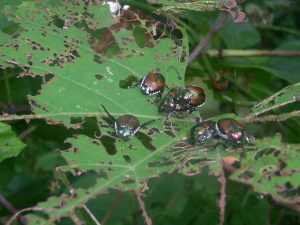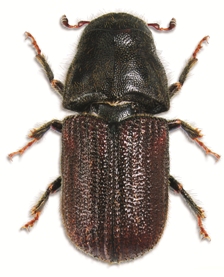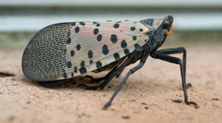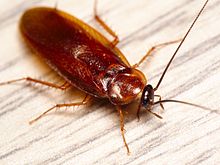 This is a one really nasty bug. It just eats everything. And possess a serious threat outdoors by gorging on fruits, vegetables, trees, and plants.
This is a one really nasty bug. It just eats everything. And possess a serious threat outdoors by gorging on fruits, vegetables, trees, and plants.
These, also known as the brown marmorated stink bug (BMSB) and is an insect in the family Pentatomidae.
The bugs are native to Asia. It was accidentally introduced into the United States, with the first specimen being collected in September 1998. The brown marmorated stink bug is an agricultural pest and by 2010–11 had become a season-long pest in U.S. orchards. It has recently established itself in Europe and South America. But have now spread to Europe, also in New Zealand. The BMSB pose a high biosecurity risk to Australia because of their tendency to hitchhike, highly mobile nature and the lack of effective lures.
The brown marmorated stink bug is a serious agricultural pest that has been readily causing damage to the crops. They feed on a wide array of plants including apples, apricots, Asian pears, cherries, corn, grapes, lima beans, peaches, peppers, tomatoes, and soybeans. This makes them extremely versatile as they do not require a specific plant to feed on. To obtain their food, stink bugs use their stylets to pierce the plant tissue to extract the plant fluids. In doing so, the plant loses necessary fluids, which can lead to deformation of seeds, destruction of seeds, destruction of fruiting structures, delayed plant maturation, and increased vulnerability to harmful pathogens. While harvesting the plant’s juices, the stink bug injects saliva into the plant, creating a dimpling of the fruit’s surface and rotting of the material underneath.
The insect uses over 170 plants for food and reproduction and threatens an estimated $21 billion worth of crops in the United States alone.
After spending spring and summer feasting outdoors, stink bugs seek shelter from the elements by making their way into homes through cracks, open windows, and air-conditioning vents.
They tend to gravitate toward homes with a heavy tree canopy and hang out on the upper floors. So if you spot flat brown bugs crawling along your bedroom ceiling or flitting around your attic or catch a whiff of something fruity and foul — it’s officially time to panic.
The headlines from the newspaper show us the nuisance these bugs can cause:
Stink bugs expected to cause more problems
Apr 16, 2018,│WTRF.com
GRAND RAPIDS, Mich. (WOOD) – Its spring, which means it’s stink bug season.
 After hibernating all winter, these tiny brown bugs are expected to begin emerging from their hiding spots in homes and heading outdoors. While these bugs are harmless and don’t bite, they can be a nuisance.
After hibernating all winter, these tiny brown bugs are expected to begin emerging from their hiding spots in homes and heading outdoors. While these bugs are harmless and don’t bite, they can be a nuisance.
The biggest threat they pose is to fruit trees.
Michigan State University scientists say this year is expected to be even worse. As the bugs climb out of their hiding spots, they may linger in your house a few days before heading outdoors. Experts say to not be surprised if you see dozens.
This invasive stink bug will kill your crops, infiltrate your house
Posted October 03, 2017 │REAL-TIME NEWS FROM AL.COM
Alabama has several species of stink bug that have been here for a long time, including one — the brown stink bug — that looks pretty similar to the brown marmorated.
However, the brown marmorated is more destructive to crops and more likely to try to infiltrate your home than Alabama’s native varieties.
In agricultural settings, farmers use insecticide-treated netting or predatory insects to control the stink bug population. Homeowners try their best to keep the bugs away from getting inside in the first place but even when they do, they apply an insecticide as a perimeter treatment or even try some home remedies.
But how effective are these?
Isn’t there any better and permanent solution to the nuisance caused by them?
In such a situation an effective method is needed which provides protection from the menace caused by these stinkbugs and hence C Tech Corporation has introduced an insect aversive named Combirepel™.
Combirepel™ is an extremely low toxic, non-hazardous, non-mutagenic and non-carcinogenic anti-insect aversive.
Combirepel™ works on the mechanism of repellency. It temporarily inhibits the mating cycle of the insects. The product impairs the ability of the insects to reproduce, that is the insects will not lay eggs or the laid eggs will be infertile. The product causes feeding disruption in an insect by triggering an unpleasant reaction within the insect which might try to feed on the application. The product temporarily blocks the reproduction system of the insects by hindering the release of the vital hormones for growth.
Masterbatch is to be incorporated with polymers while processing them and can be used for producing agricultural film, pipes, wires and cables, polymeric parts for agricultural utilities, polymer sprinklers. The wires and cables used for household appliances can also be incorporated with the masterbatch.
The liquid concentrate is to be mixed with paints in a proper ratio and can be applied to interior and exterior of houses, offices, areas of mass transits etc. Also, the concrete walls around the farms can be painted in the same way.
Since the stinkbugs are found in the areas like bookcases; under beds and sofas; in cracks under or behind baseboards, window and door trim; and in attics, we need to repel them from such places. Our lacquer form product can be applied on wooden applications to which the pests are attracted the most. The lacquer is compatible with a variety of surfaces like metal, polymer, ceramics, wood, concrete etc.
Combirepel™ is the best protection against the Stinkbugs!
Contact us at technical.martketing@ctechcorporation.com to get best solutions for pest nuisance
Also, visit our websites:
http://www.ctechcorporation.com/
http://www.rodrepel.com/
http://www.termirepel.com/
http://www.combirepel.com/
Follow our Facebook pages at:
1] https://www.facebook.com/Combirepel-411710912249274/
2] https://www.facebook.com/Termirepel-104225413091251/
3] https://www.facebook.com/Rodrepel-120734974768048/
Follow us on our Twitter pages at:
1] https://twitter.com/rodrepel
2] https://twitter.com/termirepel
3] https://twitter.com/combirepel





















